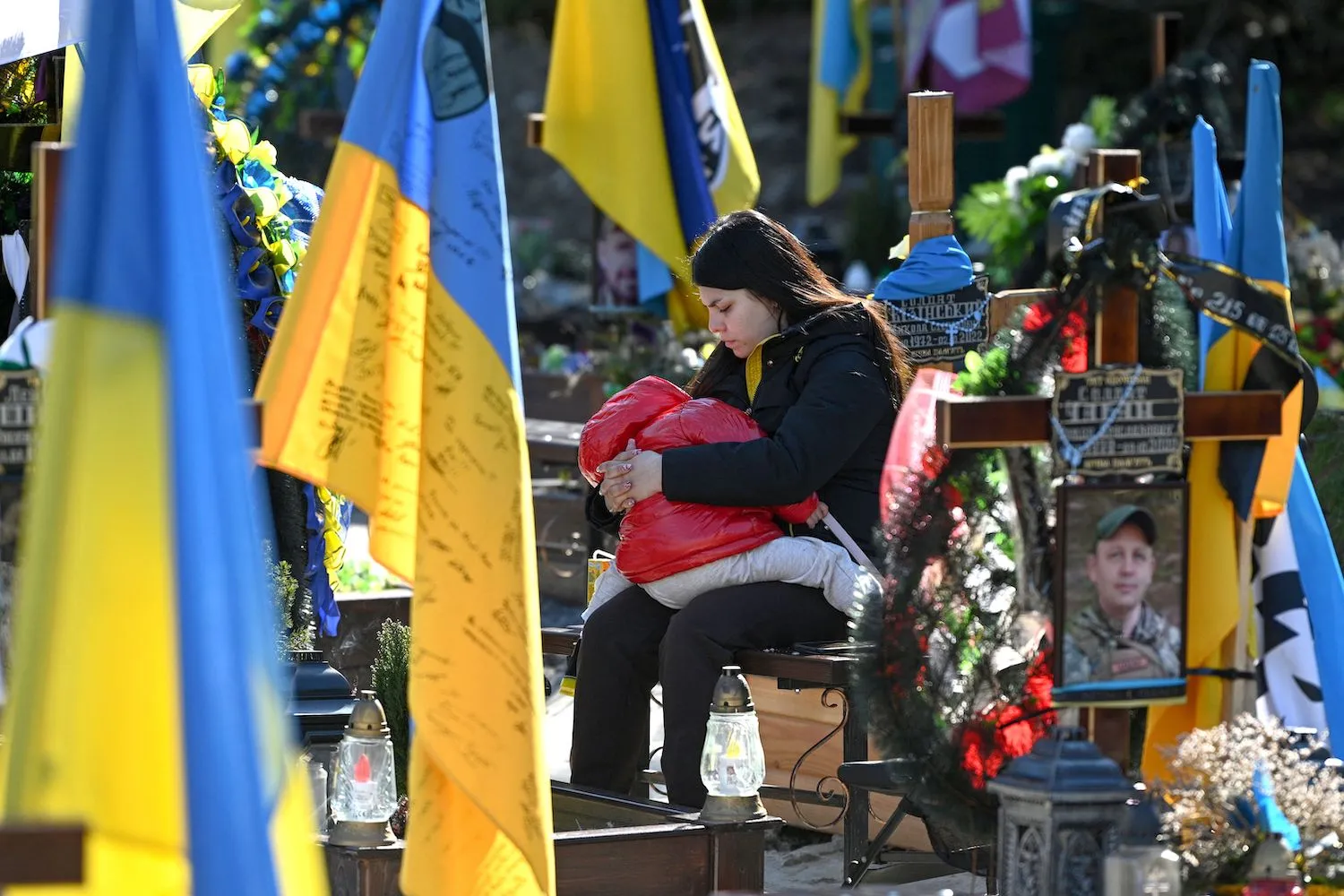
Photo credit: A woman and child sit among the graves at Lychakiv military cemetery in Lviv, Ukraine, on March 18, 2023. Yuriy Dyachyshyn/AFP via Getty Images
Hours after Russia invaded Ukraine in February 2022, refugees began pouring over the border to Moldova. Ludmila Popovici, the executive director of RCTV Memoria, a Moldovan nonprofit that works with survivors of war and torture, was in Romania at the time undergoing cancer treatment. But with the beginning of what some would now call an “endless war,” Popovici and her team immediately got to work.
They reached out to refugee centers and scoured Facebook groups for those in need of help, including sick children and women experiencing high risk pregnancies. Aided by small donations from partners overseas, they created food packages, delivered medicine, and provided direct cash assistance to the most vulnerable.
“We were all scared that we [Moldova] were going to be the next target for the Russian army,” Popovici explained. “But we knew our help was needed.”
However, more than two years into the war, organizations like Popovici’s are overworked, underfunded, and in many cases, at risk of collapse. Over-reliant on volunteers and facing staff burnout, they are struggling to meet the needs of the women and children they serve.
Every conflict is gendered—whether it’s the nature of conscription or the use of gender-based violence as a weapon of war. But the impact of the war in Ukraine, especially on forcibly displaced persons, has been more gendered than most, largely because of the country’s martial law which prohibits men aged between 18 and 60 from leaving the country.
As a result of this policy, women and children comprise a remarkable 80 percent of the 5.9 million Ukrainian refugees who have left the country since 2022. Many of them have faced gender-based violence, including sexual exploitation, human trafficking, or domestic violence, which has skyrocketed since the war began.
These risks persist today. Our organization, VOICE, has been working with women-led groups across the region since early 2022 to ensure they have access to the resources they need to participate in and lead the humanitarian response. Earlier this year, we conducted a survey of our partners across Ukraine, Poland, Moldova, and Romania, regarding the challenges they were facing and what they were seeing on the ground. They reported high rates of gender-based violence.
Many refugee women and children continue to reside in collective shelters with nonsex-segregated facilities, and limited oversight of who is entering and exiting the buildings. Another key challenge for forcibly displaced women both in Ukraine and abroad is lack of access to financial resources and employment.
In Ukraine, regular shelling has shuttered many schools, businesses, and childcare centers, making it difficult for displaced women to secure employment. Elsewhere in the region, factors such as language barriers, lack of childcare, and an absence of clear information about refugees’ right to work have made it hard to achieve a decent standard of living and put Ukrainian women at risk of exploitation.
For many Ukrainian women, who are grappling with the impacts of trauma and displacement, the war has only exacerbated low access to health care. All this is happening against the backdrop of a broader crackdown in the region, which has seen abortion rights rolled back in countries like Poland, Hungary, and Romania; direct budget cuts to organizations serving domestic violence survivors; a weakening of institutions advocating for gender equality; and an elevated risk of violence for LGBTQI+ people.
In the wake of Russia’s invasion of Ukraine, women-led organizations like RCTV Memoria in Moldova, Martynka Foundation in Poland, and NGO Fulcrum in Ukraine have mobilized rapidly across the region. In our survey, 78 percent of respondents reported that they have expanded their teams and operations, all while continuing to fulfill their original missions.
Like Popovici, they did this both because the situation required it, and because their expertise and credibility allowed them to take action swiftly while understanding cultural nuances in ways that larger, international nongovernmental organizations (INGOs) and U.N. agencies could not. But they have done so without consistent resources and financial support, often forced to draw upon their own reserves or volunteer labor in order to deliver their services.
In 2022, Ukraine received almost $30 billion in humanitarian funding. However, less than 1 percent of that made its way to local women’s rights organizations, movements, and institutions, according to a report by the Institute for Journalism and Social Change (IJSC).
Organizations cite onerous funding requirements and red tape delays including heavy paperwork and narrow application windows (One large INGO, for example, required applicants to submit no less than 30 items for accountability checks.) Many organizations simply struggle to find the time to apply for funding opportunities while simultaneously meeting the needs of their communities. Often, they feel they are not trusted by mainstream funders like U.N. agencies and INGOs—not viewed as having the right accountability systems, or perceived as being too political for their public support for reproductive rights and LGBTQI+ rights.
These challenges are not unique to Ukraine. They play out in conflicts around the world—from Afghanistan to Sudan. As the IJSC report details, only about 2 percent of all humanitarian funding goes to local NGOs and civil society organizations based in the developing countries aid is being delivered to. The proportion of that funding that goes to organizations led by women and girls is even smaller. Only 12 percent of the leaders that responded to our survey reported that their organization has sufficient funding to operate and implement their planned work in 2024.
“Our biggest concern is that by the end of 2024, there will be no Ukrainian-led organizations providing GBV services in Ukraine,” said Nastya Podorozhnya, founder of Martynka Foundation, a Polish-Ukrainian NGO that supports victims of human trafficking, war, rape, and domestic violence.
Almost three-fourths of the organizations we surveyed reported that if the resources were available, they would further expand their services for survivors of gender-based violence. As one Moldovan respondent explained, “Often, the lack of resources prevents us from effectively addressing [gender-based violence]. Even when resources do become available, they may come too late, rendering the problem obsolete or causing survivors to withdraw, lose hope, and cease engaging in dialogue.”
Even by the U.N.’s own measures, response to gender-based violence remains underfunded. But it did not have to be this way. Unlike in typically new conflict or disaster settings, the U.N. had fostered strong relationships with local Ukrainian organizations which have dealt with the threat of a Russian invasion since 2014. Similarly, though Ukraine’s neighbors had not previously seen a large U.N. presence, they had fostered a dynamic women’s sector.
Together, this meant that the international community had a unique chance to innovate and reimagine the way it engaged with local stakeholders. They should have prioritized engaging with local women’s movements and networks and encouraged their active participation in decision making processes. Based on the information provided by the women’s rights organizations we surveyed, however, this chance has largely gone unseized.
Despite pledges toward localization, women-led organizations continue to find themselves on the outside looking in. The initial phase of the war may have ended, but the crisis it triggered has not. Ukraine continues to fight back against Russia’s assaults with insufficient international support. Millions of Ukrainians continue to be displaced across the region, struggling to meet their basic needs in the face of ongoing trauma and loss. The question of what happens after the war is over continues to loom over Ukrainians.
Popovici’s organization, RCTV Memoria, worked with over 300 survivors each year before Russia invaded. In 2023 that effort increased by tenfold, and the organization was working with over 3,000 Ukrainian refugees alone. To do this, they have had to work essentially nonstop, serving survivors during the day and doing administrative work at night, mobilizing volunteers, and working without vacations or weekends.
RCTV Memoria has increasingly transitioned its activities with Ukrainian refugees to not just providing essential services to the vulnerable, but also to providing the psychosocial and economic support that displaced Ukrainians will need when they return home. “They are the most precious resource of Ukraine and they are in a safe place here,” Popovici said. “They will have to mobilize themselves to be ready to go back home and contribute to the reconstruction of their country.”
More than two years into this conflict, it is time the world started approaching it as the crisis that it is. This means giving the organizations that are working on the frontline the sustained, flexible, and long-term funding they need to increase their capacity and meet the needs of the populations they serve, instead of forcing them to compete for scraps and keeping them in a perpetual state of uncertainty.
Organizations like Popovici’s were there before the war, and they will be thereafter. They have proven they understand the needs and aspirations of the constituencies they serve, and that they have the skills and expertise to meet those needs. It is time the international community gave them the respect—and the funding—they deserve.

